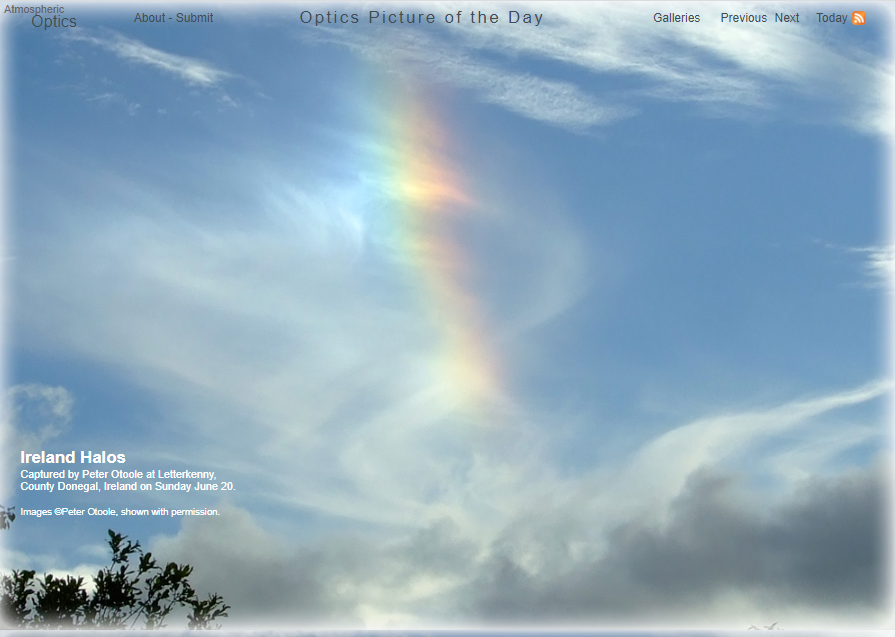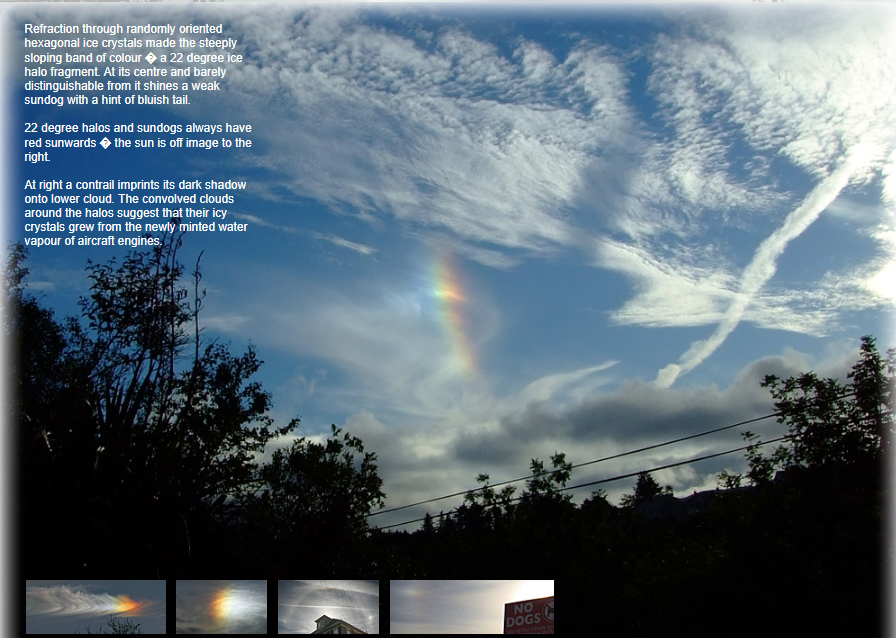Ireland Halos
Ireland Halos: A Phenomenon of Atmospheric Optics
Ireland, known for its stunning landscapes, also offers a captivating display of atmospheric optics phenomena. One such phenomenon is the occurrence of halos and sundogs in the Irish skies. These mesmerizing optical effects are caused by the refraction of light through hexagonal ice crystals suspended in the atmosphere. Let's delve into the intricacies of Ireland halos and uncover the beauty they bring to the sky.
When light passes through randomly oriented hexagonal ice crystals, it undergoes refraction, resulting in the formation of a steeply sloping band of colors known as a 22-degree ice halo fragment. These halos are named based on their angular distance from the light source, in this case, the sun. The 22-degree halo fragment is barely distinguishable from its center, where a faint sundog with a bluish tail can be observed. Sundogs are bright spots that appear on either side of the sun and are caused by the refraction of sunlight through ice crystals.
The colors observed in these halos are a result of the dispersion of light. The shorter wavelengths, such as blue and violet, are refracted more than the longer wavelengths, like red and orange. As a result, the inner edge of the halo appears reddish, while the outer edge appears bluish. This color gradient adds to the ethereal beauty of the halo fragment.
It is interesting to note that 22-degree halos and sundogs always exhibit a reddish hue on the side closest to the sun. This is due to the scattering of shorter wavelengths by the ice crystals, causing a dominance of longer wavelengths in these regions. The sun, although not visible in the images provided, is positioned off to the right.
In addition to the captivating halos and sundogs, the images also reveal the presence of contrails and their impact on cloud formations. Contrails, or condensation trails, are formed when hot exhaust gases from aircraft engines mix with the cold air in the upper atmosphere. The water vapor in the exhaust condenses into ice crystals, forming visible trails. In this case, the contrail leaves a dark shadow on the lower cloud layer, creating a striking visual contrast.
The convolved clouds surrounding the halos indicate that the icy crystals responsible for their formation grew from the newly minted water vapor released by aircraft engines. This phenomenon highlights the intricate relationship between human activity and atmospheric optics, where our presence can influence the formation and appearance of these natural wonders.
In conclusion, Ireland halos offer a captivating display of atmospheric optics in the country's skies. The refraction of light through hexagonal ice crystals creates stunning 22-degree halo fragments with faint sundogs. The color gradient within these halos adds to their enchanting beauty. The presence of contrails and their impact on cloud formations further enhances the spectacle. As we gaze at these natural wonders, let us appreciate the intricate interplay between light, ice crystals, and human activity that brings forth these mesmerizing displays in the Irish sky.

Ireland Halos
Captured by Peter Otoole at Letterkenny, County Donegal, Ireland on Sunday June 20.
Images ©Peter Otoole, shown with permission.

Refraction through randomly oriented hexagonal ice crystals made the steeply sloping band of colour � a 22 degree ice halo fragment. At its centre and barely distinguishable from it shines a weak sundog with a hint of bluish tail.
22 degree halos and sundogs always have red sunwards � the sun is off image to the right.
At right a contrail imprints its dark shadow onto lower cloud. The convolved clouds around the halos suggest that their icy crystals grew from the newly minted water vapour of aircraft engines.
Note: this article has been automatically converted from the old site and may not appear as intended. You can find the original article here.
Reference Atmospheric Optics
If you use any of the definitions, information, or data presented on Atmospheric Optics, please copy the link or reference below to properly credit us as the reference source. Thank you!
-
<a href="https://atoptics.co.uk/blog/ireland-halos/">Ireland Halos</a>
-
"Ireland Halos". Atmospheric Optics. Accessed on November 26, 2024. https://atoptics.co.uk/blog/ireland-halos/.
-
"Ireland Halos". Atmospheric Optics, https://atoptics.co.uk/blog/ireland-halos/. Accessed 26 November, 2024
-
Ireland Halos. Atmospheric Optics. Retrieved from https://atoptics.co.uk/blog/ireland-halos/.